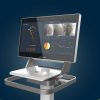The medtech industry is in a period of massive change driven by several significant forces: the need to cut cost, the rise of a connected and informed patient population, and a significant lag in technology adoption. A quick look around at the rise of companies in other industries that disrupted the status quo unveils a number of guiding principles that savvy entrepreneurs in the medical field ought to take notice of.
Take the ride-sharing service Uber, for example. This company has taken the struggling, often unloved taxi industry and reinvented it successfully based largely on one premise: customer is king. In stark contrast, the healthcare industry clearly does not seem to share this mantra. When did you ever feel like a king when interfacing with the healthcare system? Maybe a ‘queen’ for a few days in the maternity ward, but most of the time ‘king’ is quite a stretch. ‘Human’ would be a good place to start.
Guiding Principle #1: A transparent process creates a frictionless experience
In the tech world, friction is regarded as any additional step or activity in the process that is extraneous, causes frustration, or costs money.
Uber excels at reducing friction; press a button on your phone and within minutes, a cab comes to anywhere you want. They accept any form of payment, and riders can always follow the app to see where they are in their journey. The Uber service is not only easy to use but also incredibly transparent – an elusive quality for an organization to possess in today’s economy.
Transparency in the healthcare system, though hard to find, is not deliberately obscured. The sheer complexity and lack of interoperability amongst systems often causes information to become siloed. This, combined with the poor architecture of the data systems themselves, creates a constant struggle between practitioners, developers, hospitals, and patients.
Ximedica recently completed a project that followed the patient journey through a surgical procedure. When we showed this workflow–which mapped out hundreds of information transfers using paper and verbal cues to the hospital’s upper management–we were met with silence. We conveyed how they could reduce friction in the process, for example by: simplifying steps improving communication shortening staff time on administrative tasks through better designed software. We pointed out that not only would these improvements increase revenue, but they would also improve both patient and staff satisfaction.
Guiding Principle #2: Grades matter and good behavior is rewarded
For the first time, hospitals are being graded on patient experience and outcomes; how they stack up is directly tied to reimbursement. It is no secret that collecting and aggregating key metrics can help define best practices and behaviors that contribute to healthier, happier experiences.
Uber employs an interesting model that allows both the driver and passenger to be graded. Poor driver ratings–typically stemming from lateness, getting lost, and reckless driving–can result in the driver being banned from the service entirely. But the rider also receives ratings, which is when things start to get interesting. He or she may be notoriously rude, aggressive, or just plain drunk & disorderly. A low-rated passenger is less likely to be picked up. Providing a two-way mirror creates built-in accountability and protects both sides of the transaction, which is something that might have originally stemmed from services like eBay.
Applying this to healthcare wouldn’t be all that difficult, either. Imagine if patients, staff, and practitioners graded each other across a consistent, public system, and how this might improve the process for both parties. This would also make it easier to find a ‘good’ doctor without having to ask everyone you know, and give medical professionals some insight not only into the history of their newest patients but also their own staff.
Guiding Principle #3: Everybody wins when design is human-centered
Improving the healthcare experience for patients, caregivers, staff, and doctors is a matter of when, not if. Healthcare accounts for 23 percent of the United States’ GDP and with the population ever-rising, this will only continue to increase.
The patient or ‘customer’ experience is a critical area for improvement, but so too must we consider the needs of doctors, nurses and administrators. Considering the needs of all stakeholders is at the core of Ximedica’s user-centered development process. As a bevy of new technologies arise and are more adopted for clinical use, it is important for developers to stay focused on simplicity, accuracy, and relevancy. The SAR acronym will surely produce medical devices that enable actionable and timely information to be transferred from patient to provider, and ultimately reduce strain on the already spent healthcare system.








